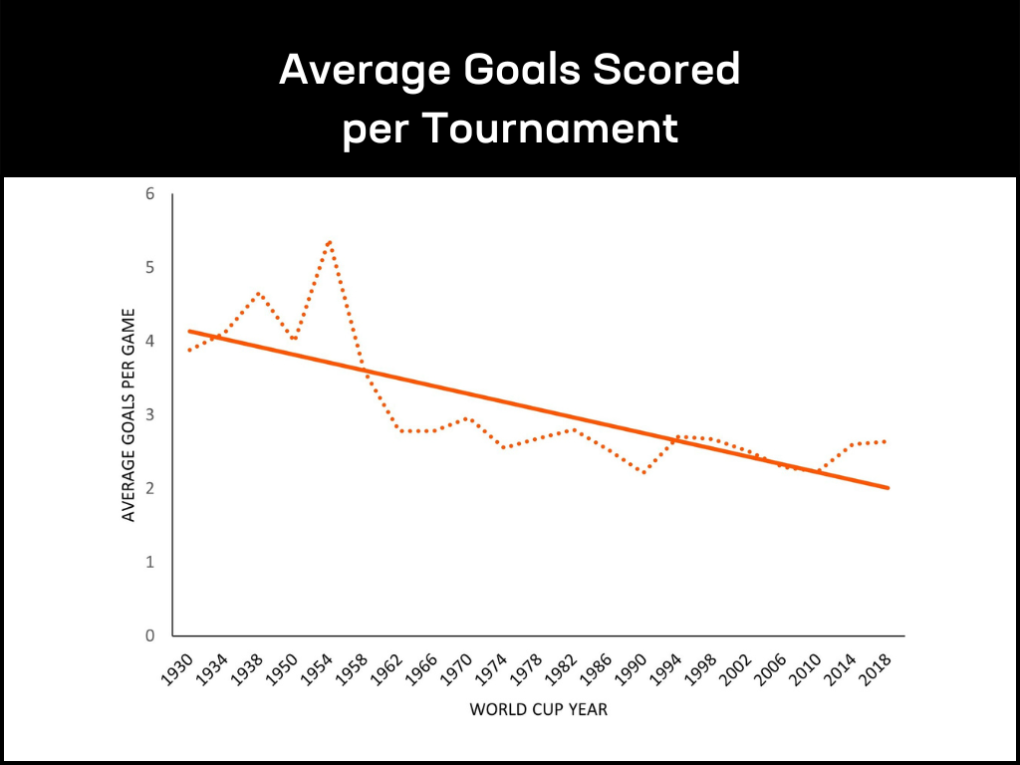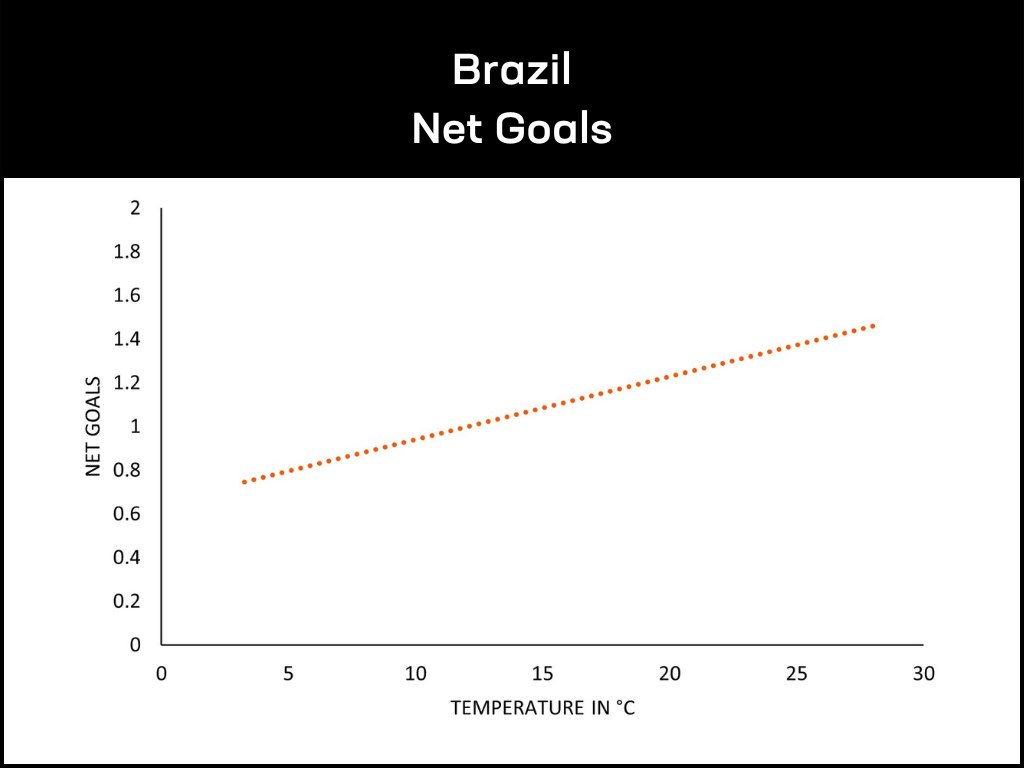This year marks the first-ever winter World Cup and intrigue is high amongst football fans about what to expect.
LiveScore Bet has collated weather data from every World Cup dating back to 1930 to bring football fanatics the most comprehensive form guide ahead of kick-off in Qatar.
We delve into goals scored, goals conceded, clean sheets, optimum temperatures and each team’s record playing at 26°C to predict what might unfold over the next six weeks.
The tournament is being held throughout November and December since temperatures in Qatar during summertime reach 40°C.
In winter months, the average temperature sits around 26°C- will this still impact players and coaches?
World Cup Temperatures are Increasing
Since the first World Cup in 1930, the average tournament temperature has been trending steadily upward. With temperatures set to hit 26°C in Qatar, this year’s edition should be the hottest one on record.
The current record for the hottest World Cup ever goes to the USA, who in 1994 hosted the highest-attended event in FIFA history with over 3.5 million fans attending, and also the current record holder for the hottest ever world cup at 23.05°C.
This trend perhaps unsurprisingly mirrors an overall increase in average global temperatures per year over the last 92 years.
In 1930, global temperatures decreased by 0.19°C, whereas in 2022 we have seen an annual increase of 0.87°C.

World Cup Goals Decreasing
Fans are seeing fewer goals on average at World Cups now than in years gone by and the number of goals per game has been trending downwards for the last 68 years since Switzerland 1954.
This could be bad news for fans of the beautiful game as fewer goals often mean less entertainment.

The Optimum Goal Scoring Temperature
Historical data tells us that the optimum temperature for goal scoring at World Cups is 12.8°C, which may leave the football purist disappointed as temperatures could more than double that figure for this World Cup.
As a worldwide trend, there is a drop-off in goals scored in games played over 25°C.

England’s Optimum Goalscoring Temperature
Southgate’s boys might find the desert a struggle in this World Cup.
They have net goals of 0.14 when playing at 26°C, meaning that as a rule, they concede more than they score- which could spell trouble.
Their optimum goal scoring is 15.7°C, almost ten degrees less than the expected temperature.
When playing at 26°C, the Three Lions only manage 0.64 goals per game.
That pales in comparison to favourites Brazil, who chalk up an impressive 2.39 goals per game at the same temperature.


Brazil excel at all temperatures
It’s safe to say Brazil is equipped to adapt to the conditions better than any other team, making them most likely to go all the way and lift the trophy in the desert this December.
Brazil top the charts with 1.4 net goals (the number of goals a team scores, minus the number they concede) at 26°C, way ahead of second-placed Netherlands at 0.53.
As mentioned above, Brazil’s 2.39 goals-per-game at 26°C is also more than any other team.
The Selecao have lost once in their last 29 matches in all competitions and head into the tournament as the obvious favourites.
The South Americans will look to extend their record as the most successful football nation on earth by winning a sixth World Cup this winter in Qatar.
Despite their favourites tag, Germany still cast a shadow of doubt in Brazilian minds.
Although the Selecao will be determined to avenge their 2014 loss, Germany could prove dangerous opposition.


Can Germany beat the weather?
Germany will be one of Brazil’s biggest threats- they have a formidable record on the world stage and have four World Cup titles to their name.
That said, their net goals of 0.43 suggests they may not be in the optimal form in Qatar.
Germany do score 1.59 goals per game when playing at 26°C, which is third best among the tournament favourites.
To confuse things further, their win in 2014 came at the hottest tournament this century (21.37°C), which saw them land an unforgettable 7-1 win against hosts Brazil.
Could they be getting used to the warmer weather? The Germans are an outside bet to win this year’s tournament.


Methodology
Data on all World Cup games since the first game in 1930 was collected from fbref.com. This data was paired with the average temperature of the location of each game using data from the climate knowledge portal of the world bank. This data was then plotted to find the relationship between temperature and goals scored. The data was also separated into countries to see how temperature affects how many goals they score and the net goals (Goals Scored – Goals Conceded). We then projected how many goals each country might score and the net goals they might achieve based on the average predicted temperature for November in Qatar (26°C).
What about Wales
Wales are heading to their first World Cup Finals in 64 years- we haven’t forgotten! Unfortunately, the 1958 tournament in Sweden was the first and last appearance the Dragons made on the world’s biggest stage, so the data was a bit thin on the ground and didn’t give us enough to work out their optimum temperatures for goals scored and conceded. Perhaps this air of mystery can work in their favour in Qatar.
